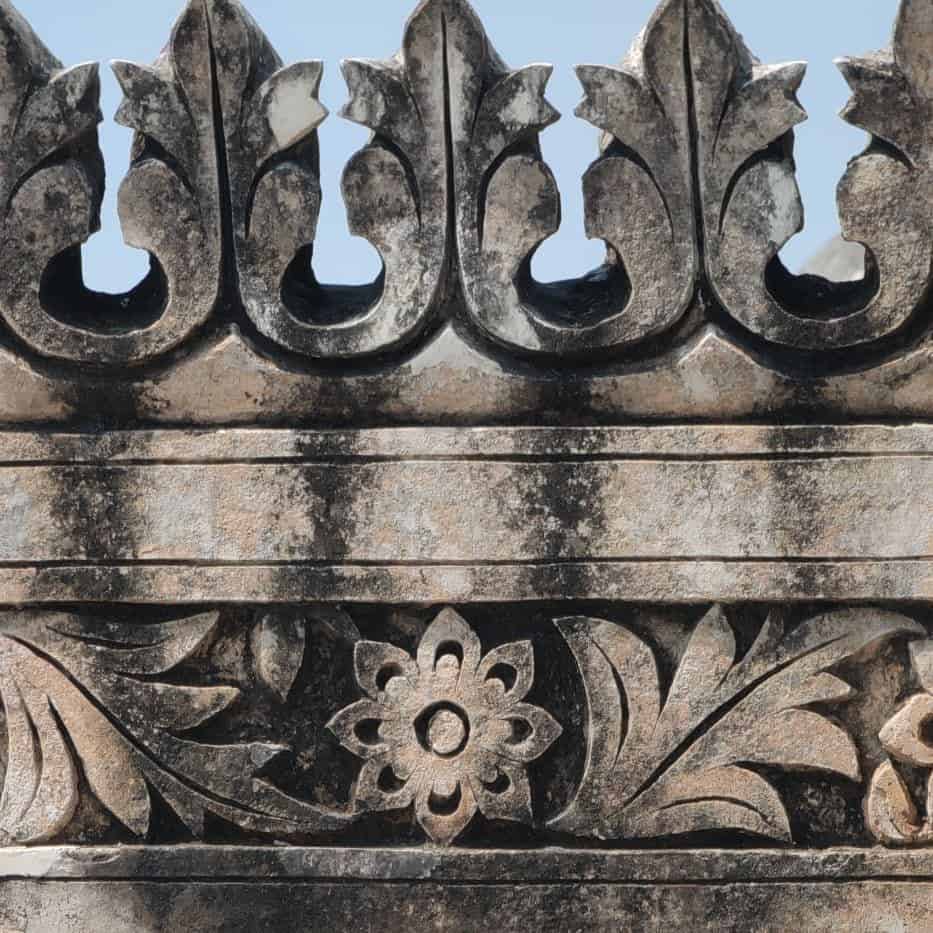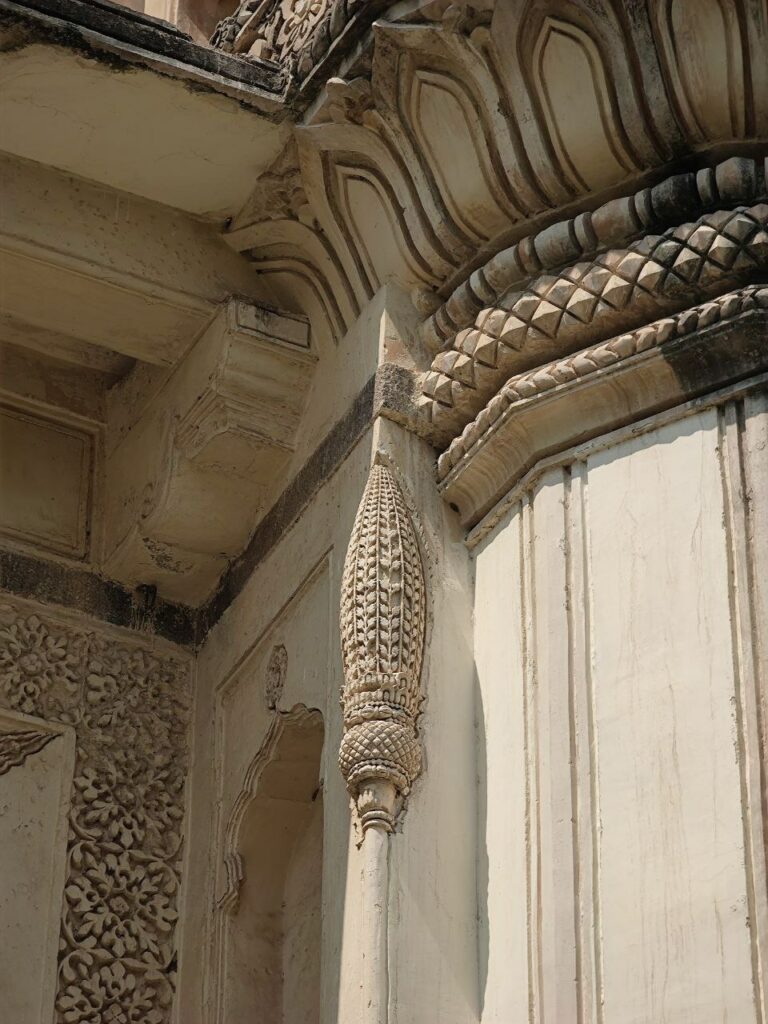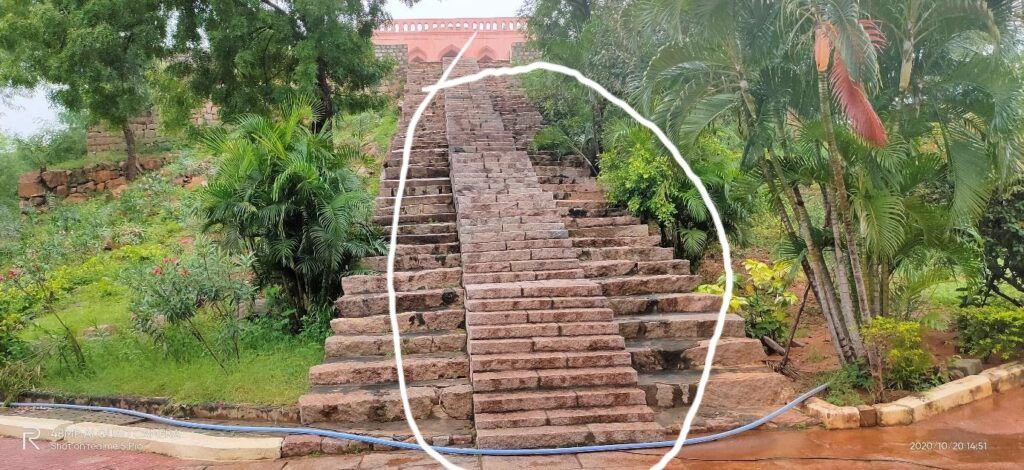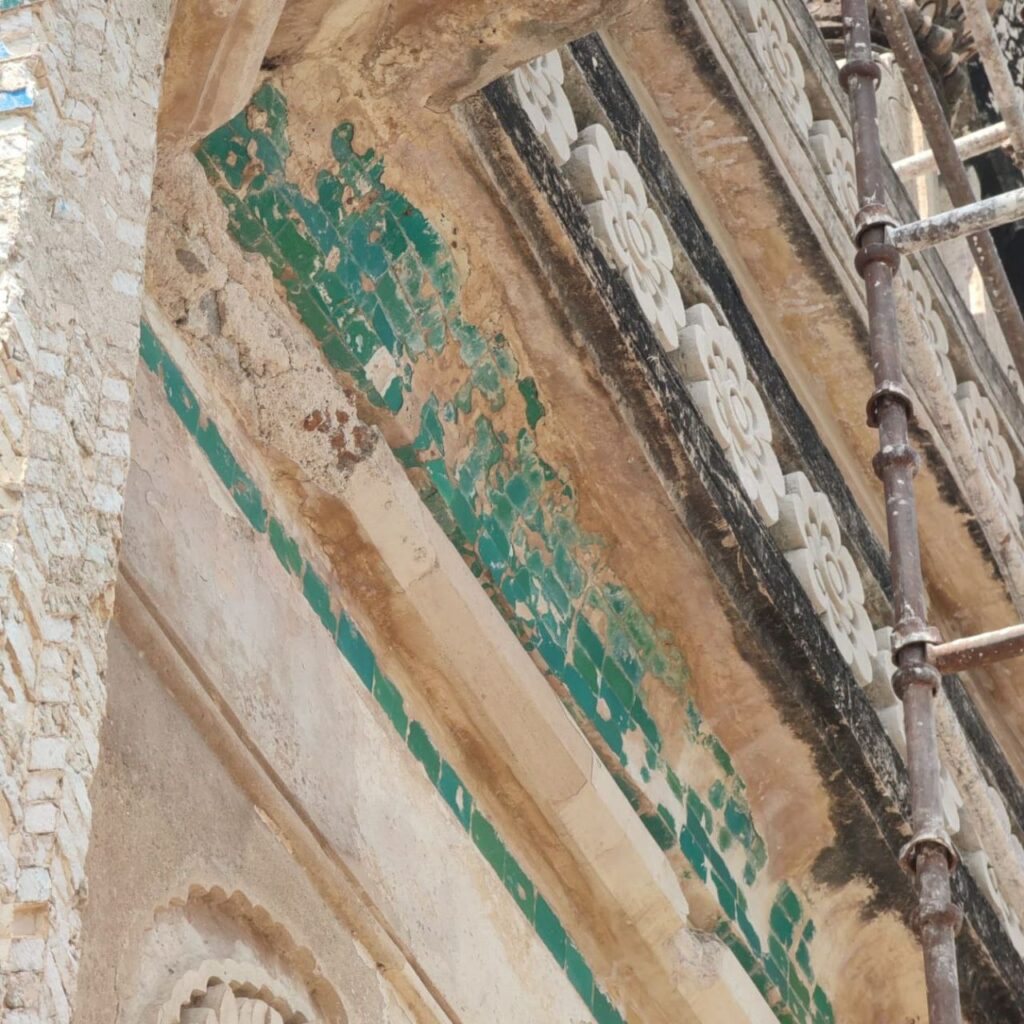Hyderabad: It has been nearly a decade since efforts have been on to get the UNESCO World Heritage site status for the Charminar and Golconda fort. Both heritage spots are however far from it, all thanks to local encroachments and politics. However, there is still some hope, and if all goes well, then perhaps the Qutb Shahi tombs, or the royal necropolis where Hyderabad’s founders are buried, will become major global tourist attraction in the coming days.
The Qutb Shahi tombs over nearly a decade has literally seen a transformation, all thanks to the ongoing restoration works being taken up by the Aga Khan Trust for Culture (AKTC) and the Telangana government’s Department of Heritage. For the longest time, it was thought that the Qutb Shahi tombs has about 65 historic structures. However, over the past decade, restoration work and excavations have revealed that there are nearly 100 heritage monuments in the site, close to 50 of which are tombs.

During the restoration work, AKTC’s experts also found designs that were covered up by layers of concrete slapped on domes, like on the tomb of Sultan Abdullah Qutb Shah, the sixth Golconda king (1626-1672). The dome on his site was found to have ribbed lines. Similarly, the tomb of his predecessor and father Sultan Mohammad Qutb Shah (1611-1626) also has green and blue persian tiles, only patches of which are left. Decades of state apathy and local encroachments have damaged structures in many ways.
-

A partial view of the dome from Sultan Mohammad Qutb Shah’s tomb, on which bits of Persian green tiles can be seen. (Photo: Yunus Y. Lasania) -

A partial view of the dome from Sultan Mohammad Qutb Shah’s tomb, on which bits of Persian blue tiles can be seen. (Photo: Yunus Y. Lasania)
One of the most important restoration work that has happened at the Qutb Shahi tombs is the removal of concrete from domes and other structures, which were simply plastered on to the monuments by officials from the erstwhile Andhra Pradesh Department of Archaeology. Tons of concrete has been removed from monuments, often revealing intricate patterns of Persian artworks that were undertaken centuries ago by the Qutb Shahi or Golconda era (1518-1687) craftsmen.
“The greatest thing about the restoration work here at the Qutb Shahi tombs is that the artistry has been kept alive. India is possibly the only place where there are still craftsmen who can undertake such work,” said Ratish Nanda, CEO of the Aga Khan Trust for Culture (AKTC). The organisation has also taken up globally recognised restoration works in India and other countries, like the Humayun’s tomb in Delhi (which is a UNESCO World Heritage site).
Aside from graves of the Qutb Shahi royal family members (and others), the site also includes funerary mosques, gardens, enclosure walls, seven step-wells (baolis), and also several unmarked graves. Aside from restoring intricate designs and undoing damage, the AKTC’s efforts are also on to turn the Qutb Shahi tombs into a major tourist destination in Hyderabad.

“The Qutb Shahi tombs has a potential to be a UNESCO World Heritage Site. As of now, apart from tourists, many families come here for a picnic. But when you have an interpretation centre and explain what this site means to the city, then people will also realise and understand the historical importance of such a site,” Nanda told Siasat.com, during an interaction with the media held on October 25 at the site.
During its restoration work, one of the many things the AKTC found was the enclosure wall to the tomb of Sultan Quli Qutb-ul-mulk, the founder of the Qutb Shahi or Golconda kingdom. His tomb, which was the first one to be buried there in 1543, is surrounded by tombs of the next three kings, and an elaborate Hamam (Turkish bath). The site was also historically connected to the Golconda fort, which was a walled city until Hyderabad was founded on 1591. The tombs area and the fort were connected through the ‘Janaza’ or ‘Murda’ Darwaza (gate).
As of now, due to the COVID-19 pandemic, the restoration work has also slowed down, but the entire project is expected to be completed within the next few years. Earlier this month, Telangana municipal administration and urban development minister K. T. Rama Rao (KTR) praised the AKTC for its “stellar” work on behalf of the state government in the state assembly. Similarly, AIMIM MLA and floor leader Akbaruddin Owaisi also lauded the AKTC’s work to improve the condition of the Qutb Shahi tombs.
However, no work remains without criticism, and the AKTC’s work on the Qutb Shahi tombs is no exception. In the latest episode, former deputy director of the (erstwhile) AP Archaeology department claimed that steps on the tombs of the Hayat Bakshi Begum had been reduced from about 16 to 8. It has been claimed that the queen mother (who was the daughter of Hyderabad’s founder) had built extra steps as she got older. However, there is no historical reference of this story anywhere.

When asked about this, AKTC’s head and conservation expert Ratish Nanda said that they had removed the steps, as it was a later addition and was not part of the historical site. He pointed out that the same pattern of steps are also there on the Taramati Baradari, which was built for the courtesan Taramati by Sultan Abdullah Qutb Shah (Hayat Bakshi’s son). “So what was it added there for? We are restoring the monuments to how they were originally, and not adding or disturbing anything,” he added.
City historian and heritage expert Sajjad Shahid also pointed out that adding more steps on Hayat Bakshi Begum’s tomb by the queen is unlikely. “It does not seem logical given that kings and queens would often be carried carried around in palanquins,” he added.
Will Qutb Shahi tombs get nominated for UNESCO World Heritage Site status?
The Qutb Shahi tombs complex was part of the list of places submitted between February 2019 and January 2020 for the nomination. However, the union government eventually prioritised Gujarat’s Dholavira site over it. While there is no denying the importance of other sites, with regard to history, it may be noted that from a heritage perspective, the Qutb Shahi tombs in Telangana has the potential to singlehandedly become the sole reason for drawing tourists.
It has nearly 100 structures in one huge place, which includes tombs, a Turkish bath, gardens, old trees, pavilions and in a general a very pleasing aesthetic.
Earlier this year, the Rudreshwara (Ramappa) temple from Telangana got the UNESCO World Heritage site, which is surely something to celebrate about as it puts Telangana on the global map as a tourist destination. One question on the minds of many activists also is: Why hasn’t the state government pushed forward other equally important monuments like the Charminar and the Qutb Shahi tombs as well?
In the past, attempts were made earlier to try and nominate the 430-year-old Charminar, Hyderabad’s foundational monument, and the Golconda fort. But nothing came off it, given that there were several issues which the government had to fix. More recently, the Qutb Shahi tombs, as part of monuments from Deccan (including those from Bijapur and Gulbarga in Karnataka) were also supposed to be nominated as UNESCO World Heritage sites.
History of Hyderabad, Golconda fort and Charminar
Golconda fort: The Golconda Fort’s origins are traced back to the 14th century when the Rajah of Warangal Deo Rai (under the Kakatiya Kingdom which ruled from Warangal) built a mud fort. It was later taken over by the Bahmani Empire between 1358 and 1375. It was later developed into a full-fledged citadel by Sultan Quli who founded the Qutb Shahi kingdom in 1518 following the death of last sovereign Bahamani emperor Mahmud Shah Bahamani.
Earlier, Sultan Quli was a commander and later governor of Tilang (Telangana), under the Bahamani Empire (1347-1518), when its second capital was at Bidar. Sultan Quli, who was originally from Hamadan, rose to the level of Governor under the Bahamani empire. At this point of time he was given the fort, which he began developing into a walled-city. It eventually came to be called Golconda Fort (name derived from Telugu Golla-conda, or shepherds hill).
The fort has 87 bastions, and eight gates, of which a few are not accessible to the general public as they are under army control. It is believed to be one of the Deccan’s most impregnable forts, and had kept Mughal emperor Aurangzeb’s army at bay for eight months when he laid siege to Hyderabad in 1687. Aurangzeb succeeded and ended the Qutb Shahi reign that year and took Abul Hassan Tana Shah, the last Golconda king, captive.
Charminar: The Charminar is Hyderabad’s foundational monument. Built in 1591, it was constructed to mark the city’s establishment by Mohammed Quli Qutb Shah, the fourth ruler of the Qutb Shahi (or Golconda) dynasty. Prior to the Charminar being built, the Golconda fort was a walled city, from where the first three kings Qutb Shahi kings had ruled.
After Hyderabad was founded, the fort was eventually turned into a military barrack. However, the fort was also the place from where the final Qutb Shahi-Mughal war was also fought in 1687, after Aurangzeb attacked the Golconda kingdom. He succeeded after an eight month long battle, after which the entire Qutb Shahi area was brought under Mughal territory.









